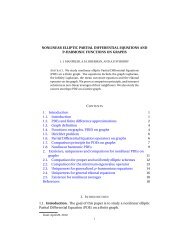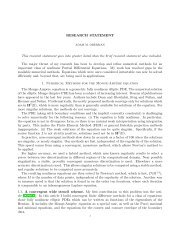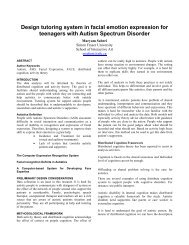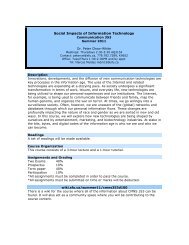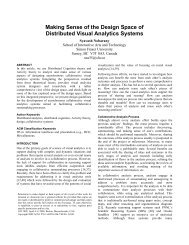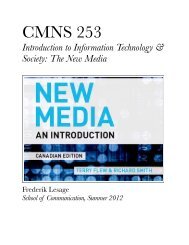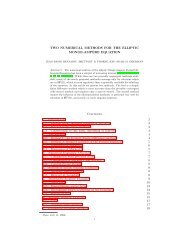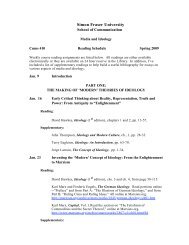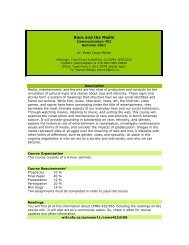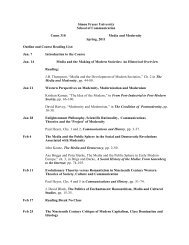CMNS 253 Syllabus - SFU Wiki
CMNS 253 Syllabus - SFU Wiki
CMNS 253 Syllabus - SFU Wiki
You also want an ePaper? Increase the reach of your titles
YUMPU automatically turns print PDFs into web optimized ePapers that Google loves.
economy as well as more practical matters such as e-commerce strategies and the role that newmedia play in ‘disintermediation’ in order to better understand the forces driving the globalknowledge economy. We look at the nature of digital goods and how they have disrupted manyindustries that formerly relied on the expense of reproducing and transporting ideas (news,music, movies, for example) and that now find themselves without that avenue for extractingvalue. In this context, we return to some of the themes on creativity from Chapter 7 and examinethe creative economy more closely from a business perspective, examining topics such astechnological innovation and the innovator’s dilemma.DISCUSSION QUESTIONS1. The term globalization is defined in this chapter in terms of a series of interrelatedprocesses. What are these processes and what evidence or examples of them can you identifyin your own living, working, or educational spheres?2. What is meant by the term ‘knowledge economy’? What are some of the features,processes, and dynamics involved?3. What is an e-commerce strategy, what are some of its benefits, and why is it important fornew media?4. This chapter describes the global knowledge economy as arising from the confluence ofthree developments. What are these and what are the dynamics that link them?5. This chapter presents both old and new paradigms of economic development. What arethe characteristics of each of these paradigms? Why are they significant to new mediastudies?6. What are the two examples of the innovator’s dilemma given in this chapter? What aresome real world examples of this dilemma?7. This chapter takes up some discussion of the difference between information andknowledge. For example, the notion that knowledge is embodied in persons and practices,whereas information is captured and stored in databases and is readily accessible andincreasingly reproducible through the Internet. What significance does this have forunderstanding the knowledge economy in terms of both creative and cultural aspects?CLASS ACTIVITIES1. As a class, attempt to discover the country of origin for the collected electronic andfashion items present in the room. Try to account for raw materials and multiple points oforigin for complex items with embedded components such as laptop computers. If you can,see how much—if anything—was ‘Made in Canada’. What do your conclusions suggest toyou about Canada’s role in a knowledge economy?2. Use the World Bank’s Knowledge Assessment Methodology tool (see Useful Websites,above) to compare Canada to a selected other country. How do we compare? What are ourstrong points and what are our weak points?



